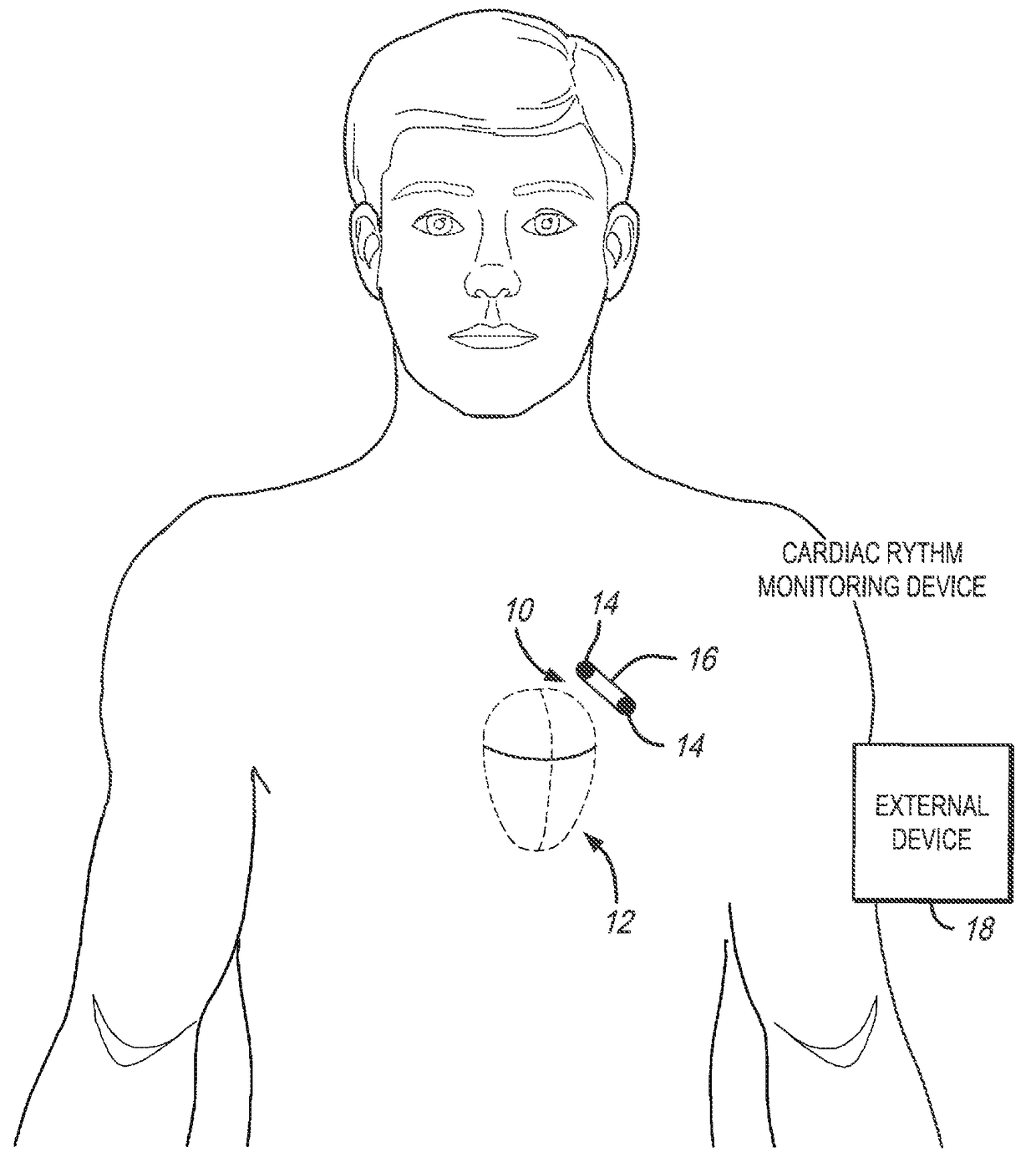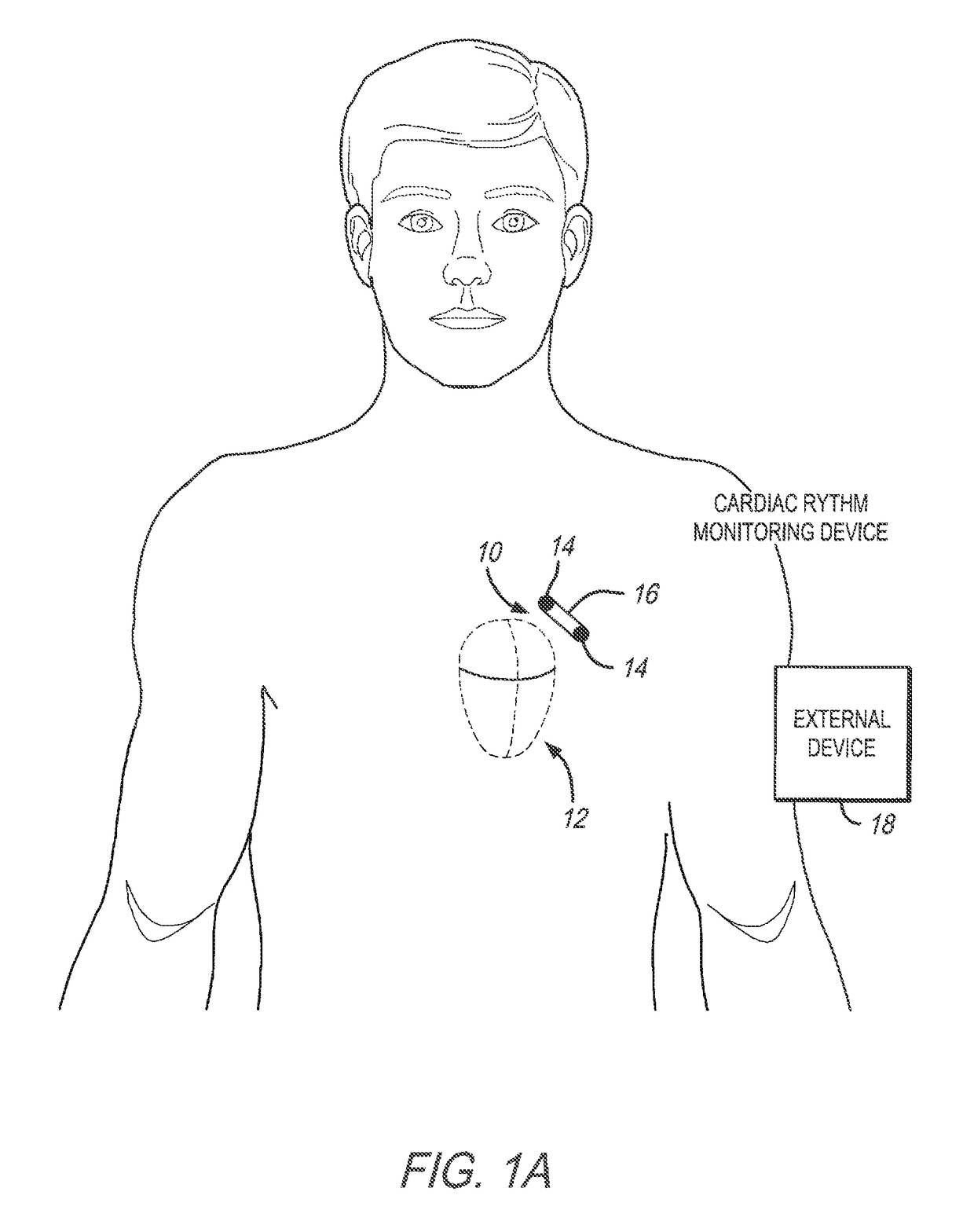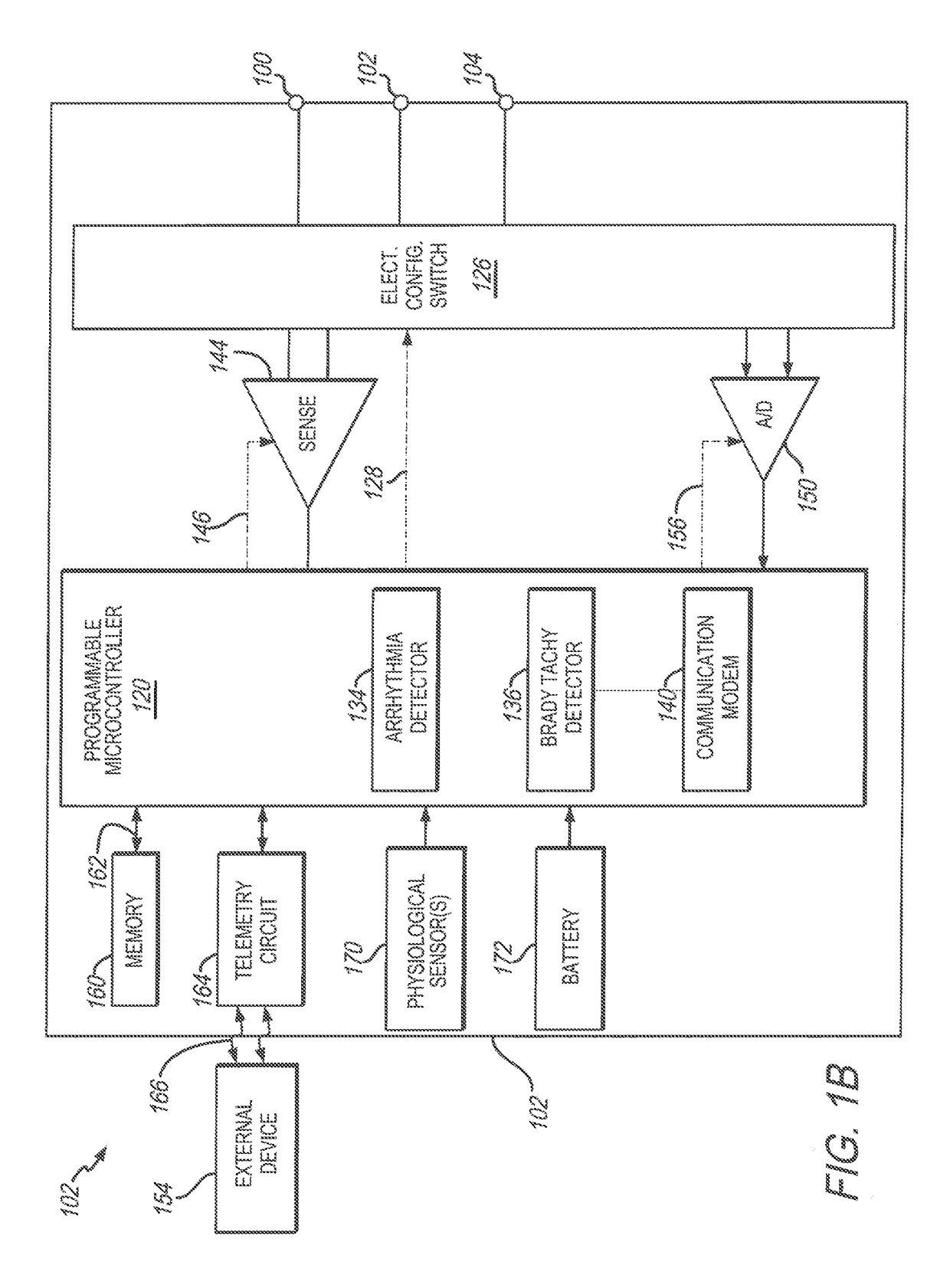Method and system to discriminate rhythm patterns in cardiac activity
a rhythm pattern and cardiac activity technology, applied in the field of implantable loop recorders, can solve problems such as false positives, impulsive propagation through the av node, and existing af detection algorithms may experience undue false positives
- Summary
- Abstract
- Description
- Claims
- Application Information
AI Technical Summary
Benefits of technology
Problems solved by technology
Method used
Image
Examples
Embodiment Construction
[0031]In accordance with embodiments herein, methods and systems are described for detecting and discriminating episodes of interest, namely Tachy-Brady episodes, also referred to as fast-slow episodes (indicative of sick sinus syndrome). This abnormal heart rhythm problem is often seen in people who have been diagnosed with atrial fibrillation. The fast-slow (or Tachy-Brady) episodes are identified based on alternating rhythm patterns that change in a relatively abrupt manner (e.g., with one or a select few beats). The fast-slow (Tachy-Brady) episodes represent groups of cardiac beats exhibiting a bradycardia behavior followed or preceded by groups of cardiac beats exhibiting a tachycardia behavior. The transition between the Bradycardia and Tachycardia behavior may be detectable within a small number of beats.
[0032]In accordance with embodiments herein, methods and systems record and display to the physician electrocardiogram (EGM) data that exhibits the fast-slow characteristic. ...
PUM
 Login to View More
Login to View More Abstract
Description
Claims
Application Information
 Login to View More
Login to View More - R&D
- Intellectual Property
- Life Sciences
- Materials
- Tech Scout
- Unparalleled Data Quality
- Higher Quality Content
- 60% Fewer Hallucinations
Browse by: Latest US Patents, China's latest patents, Technical Efficacy Thesaurus, Application Domain, Technology Topic, Popular Technical Reports.
© 2025 PatSnap. All rights reserved.Legal|Privacy policy|Modern Slavery Act Transparency Statement|Sitemap|About US| Contact US: help@patsnap.com



